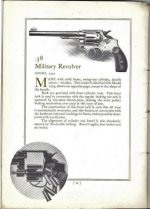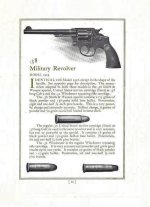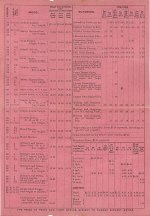As DWalt notes, the discussion should be about 1902's and 1905's, and not about 1903's . The model of 1903 is an I-frame revolvers, chambered in 32 long.
The hashing and rehashing that DWalt refers to, is the result of a new model, the
Model of 1905, being introduced towards the end of the 1902 1st change. The 1902 has
a round butt; the 1905 has a square butt. Otherwise, they are identical. This means
that a 1902 1st change is identical to a 1905 (no-change), and from a nomenclature
perspective, this is a large problem, for two different models in the same serial
number series.
Neal & Jinks tried to get around this problem, but their end result necessitated doing
away with the model of 1902 at serial number 62450. This is a fatal flaw with the
Neal & Jinks methodology, because the 1902 does not go away. It is in the catalogs
and all-model circulars at least into the 1970's, and turns out to be the survivor of
the two models, to this day. The square butt model was discontinued maybe 10
or more years ago.
In all fairness, there is no good solution to this problem, and that is to be expected,
because the engineering-change methodology, as devised by Walter Roper, was
never intended to deal with models. It was only intended to deal with serial numbers.
Because of what I describe above, it can't be made to work for our collector purposes,
that want to talk about models.
Regarding the number of target revolvers, its not known how many round-butt vs square
butt revolvers with target sights were made. In fact, its not known how many of either
were made. Limiting the discussion to 4-screw frames, the serial number range for
all round-butts is 62449, which includes the model of 1899. The range for square butts
is 58000 to 62449; remember that they are both sharing the same serial number series.
In a presentation I made at the S&WCA meeting in Las Vegas, I put together a methodology
to estimate the number of targets that were made. I concluded that, probably, about 10%
of the production were targets, and maybe half of those still exist today.
Regards, Mike Priwer






